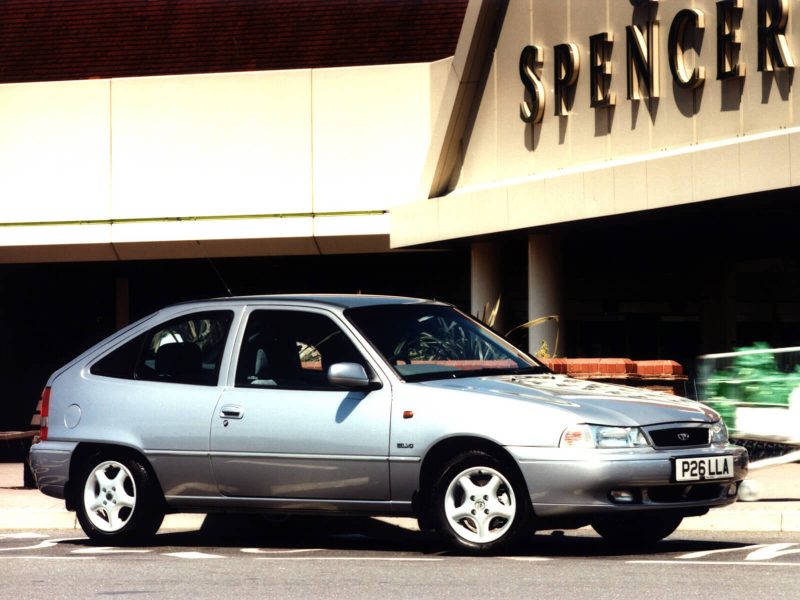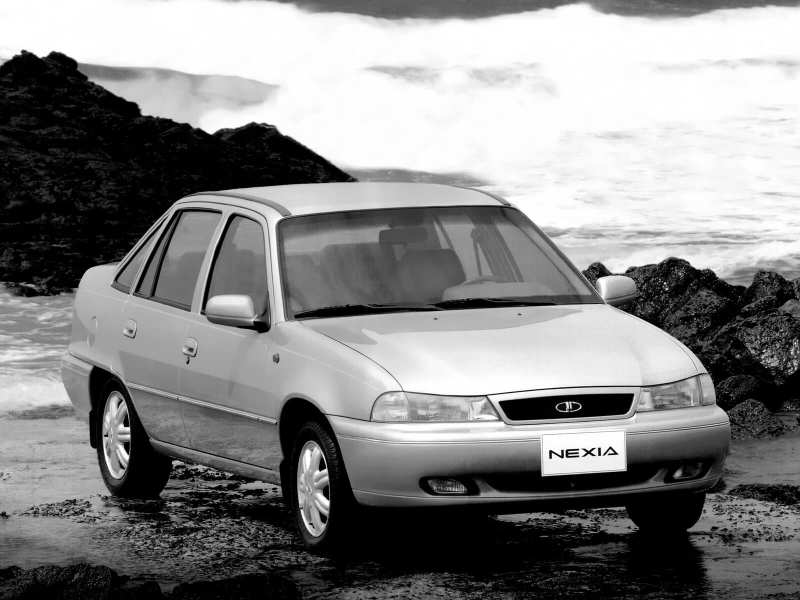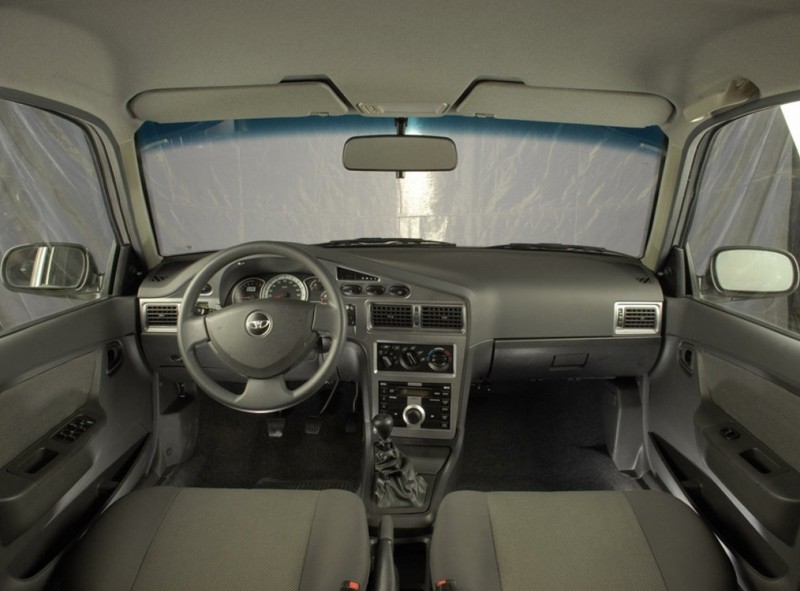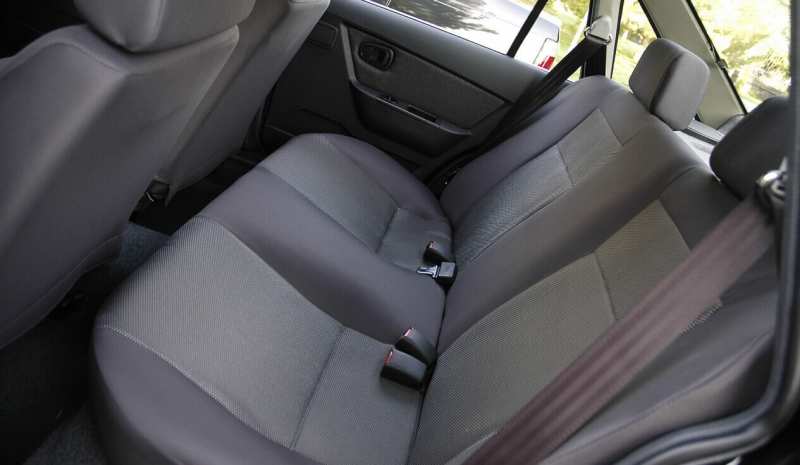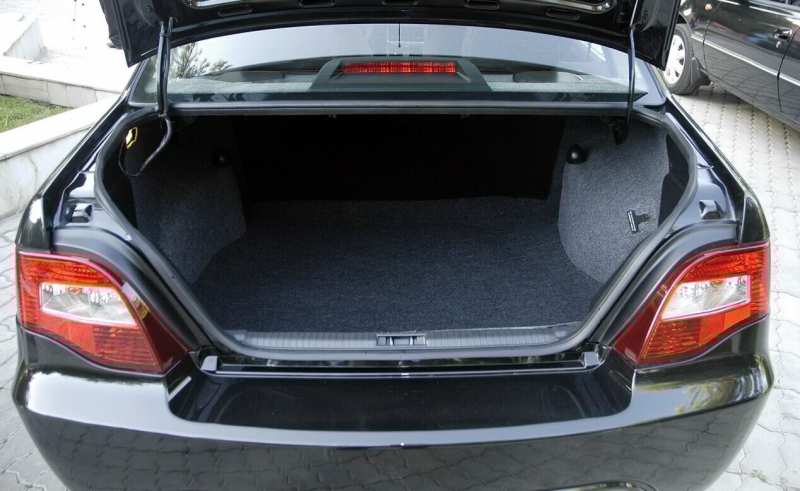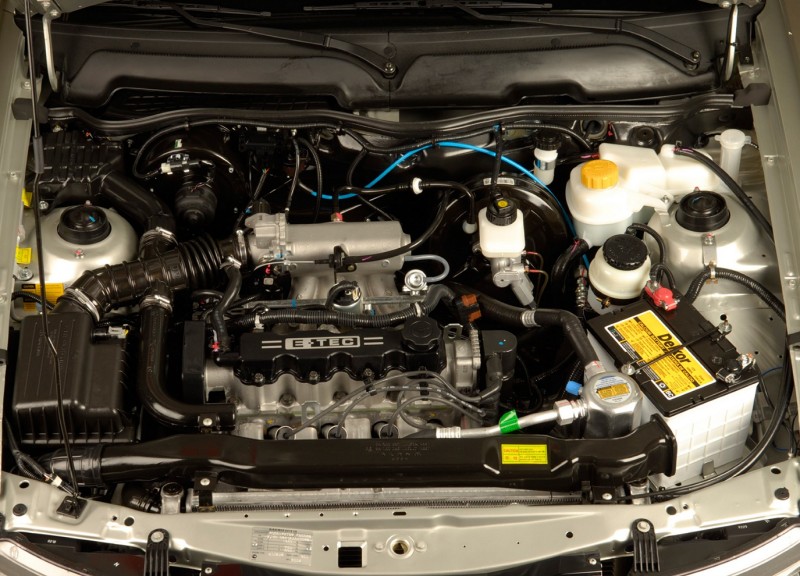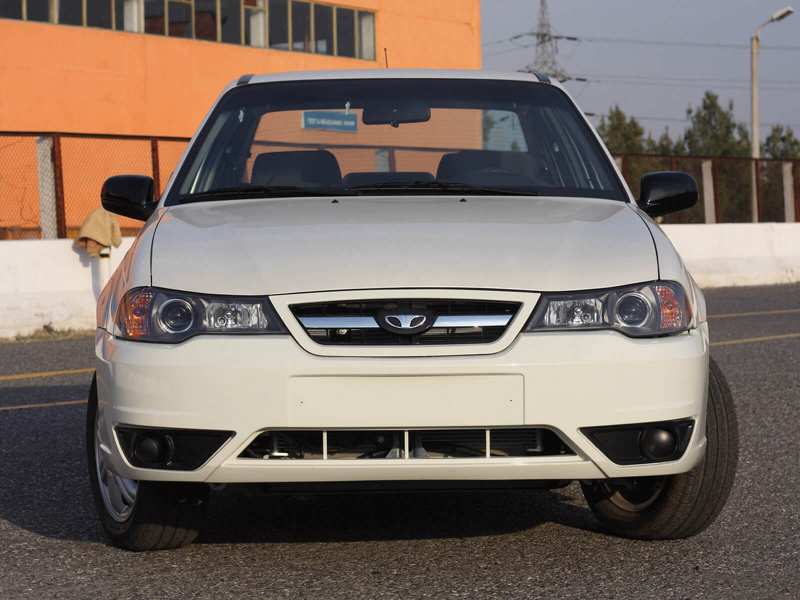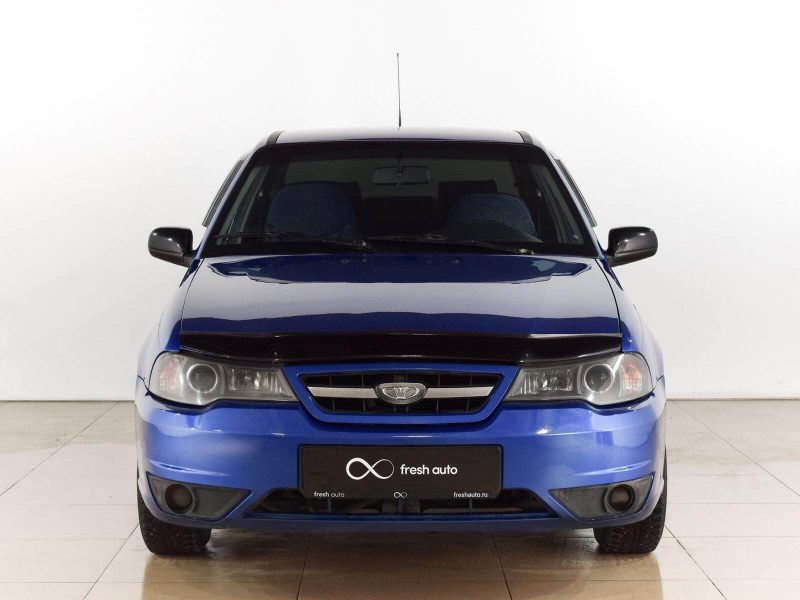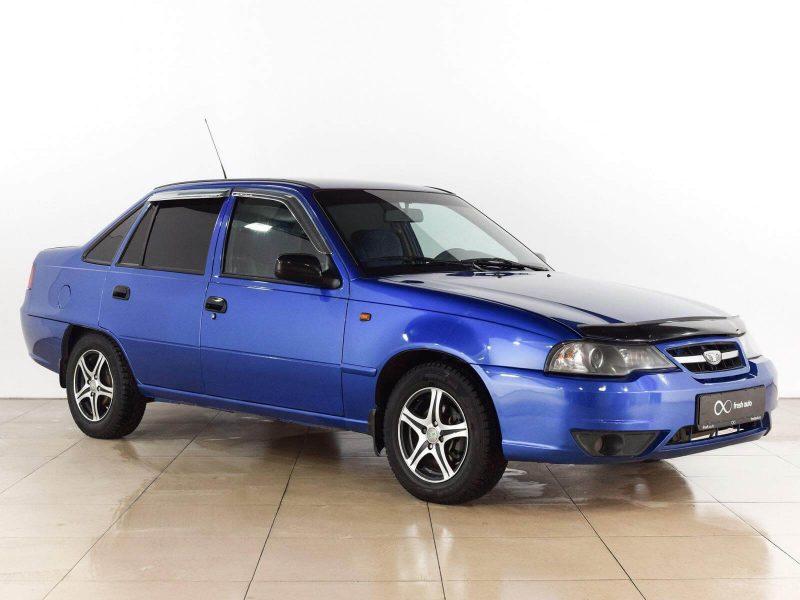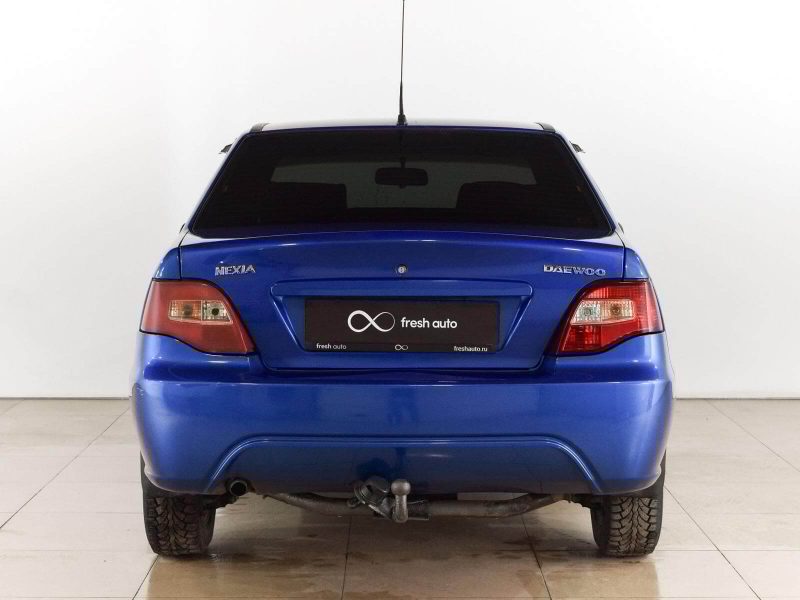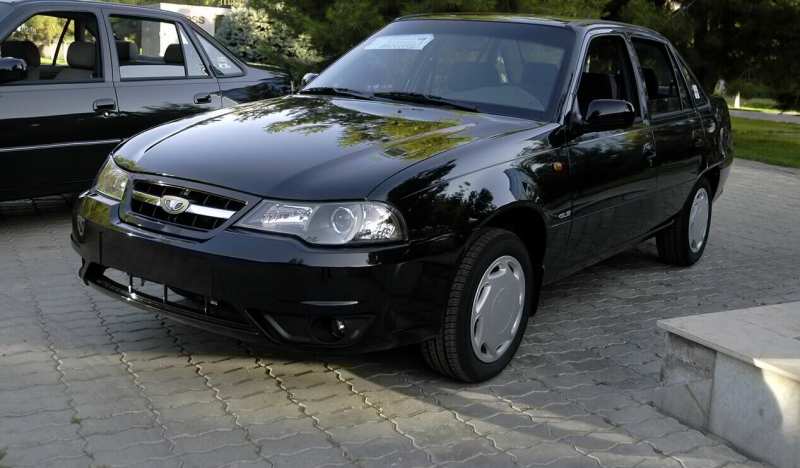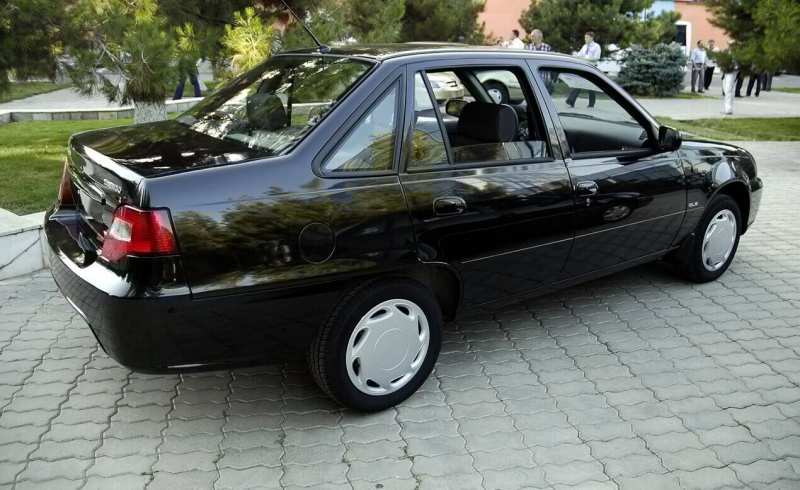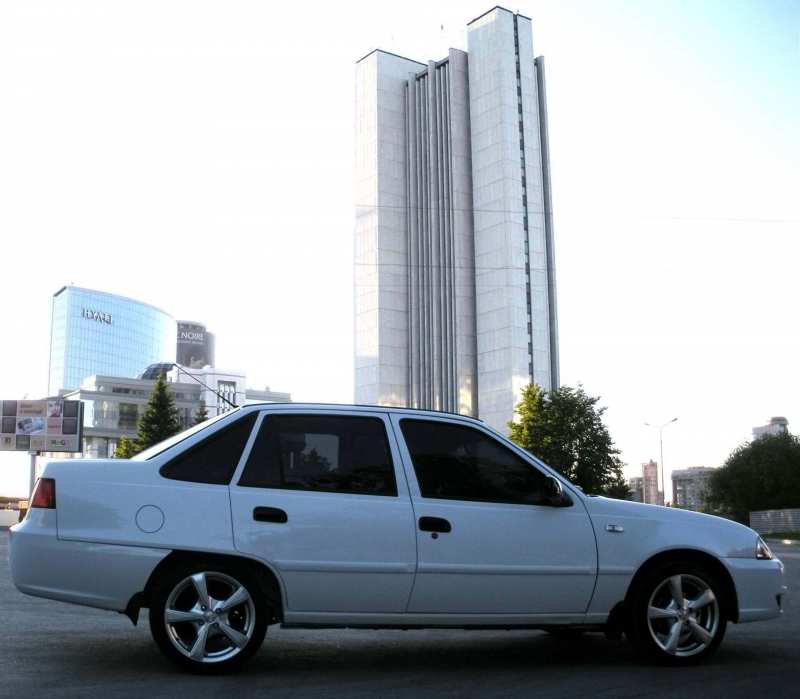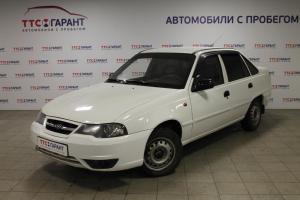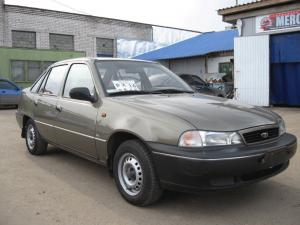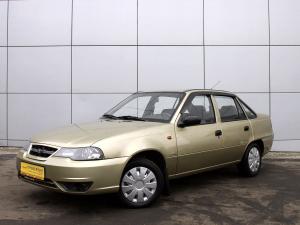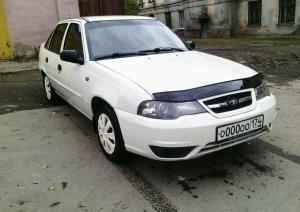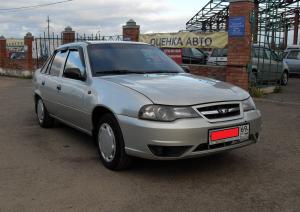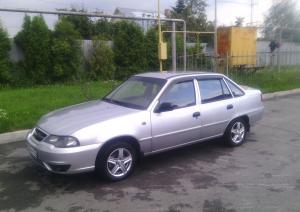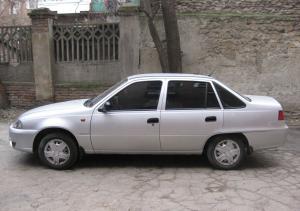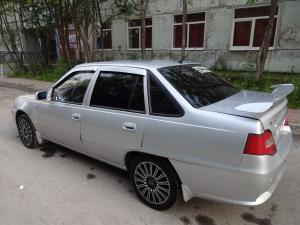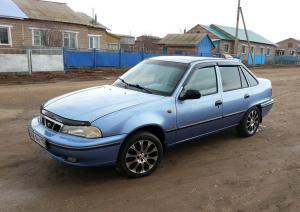Daewoo Nexia
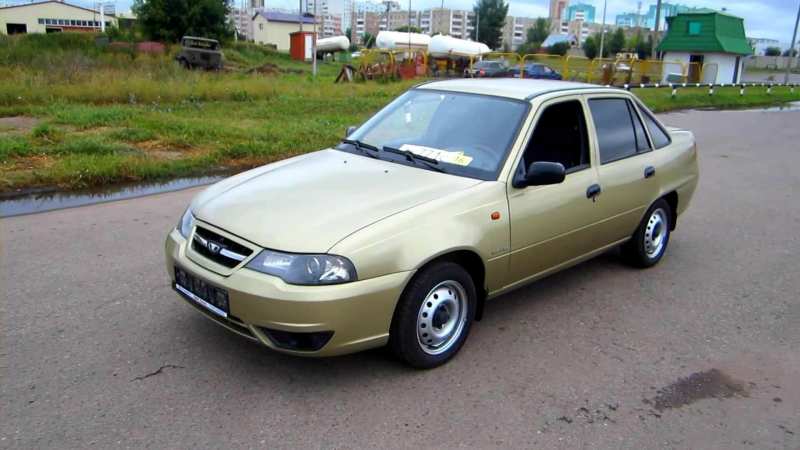
One of the most popular car brands in Ukraine is Daewoo. But I would like to talk specifically about one of them – Daewoo Nexia. Daewoo Nexia is a C-class sedan that first saw the light in 1995. It was created on the basis of Opel Kadett. Interestingly, in the homeland, in the Republic of South Korea, the car was sold under the brand name Daewoo Racer.
In 1996, it was discontinued from production in Korea and produced in Daewoo branches in different countries. And in 2008 it was modernized. Also, the manufacturer plans to update the model of the car again in the near future. The whole model range is Daewoo.
- Car history
- The first generation
- Restyling
- Exterior
- Interior
- Specifications
- Powertrain
- Transmission
- Suspension
- Brake system
- Steering system
- Dimensions
- New motors in 2008
- Safety
- Краш тест
- Complete sets and prices
- Reviews by car owners
- The pros and cons
- Summing up
- Daewoo Nexia photo
- Test drive
- Video overview
Car history
The Daewoo Nexia Sedan is a simple and cheap car. Experts attribute considerable popularity of Nexia Daewoo in the market of the Russian Federation to rather competitive price tags, which have always been. It is difficult to justify the popularity of this vehicle in another way.
It will not be superfluous to remind that the car became the successor of Opel Kadett E 1984. This car sold perfectly, despite its ugly appearance and outdated design. Moreover, the sales were not only at home, but also in European countries, where Russia and Ukraine can be attributed.
The following year, in 1996, Nexia was started to be produced in Rostov region at the plant “Krasnyi Aksai”, which were called, so to speak, “Russian”. They organized a large knot assembly of cars in the sedan body. Before a year has passed, the cars were produced at the Uzbek company.
Unusually, but the cost of manufactured cars in Uzbekistan was much lower, so they almost completely replaced the domestic car market of twins, which were produced in Rostov and even in Korea.
The first generation
From 1998 to 2008, the vehicles were equipped with G15MF engines with a capacity of 1.5 liters, which eventually gave 75 “horses”. Such a power unit was in reality a copy of the engine, which was installed in the Opel Cadet E. In 2003, the car was updated, which affected not only the external characteristics, but also the technical parameters.
The improved engine now developed 85 “horses”. Power units met European environmental standards Euro-2 and were produced until 2008. Already in 2008, Uzbek employees of UzDaewoo decided to upgrade the sedan. Thanks to such an upgrade, the car got new bumpers, optics and saloon.
The engine was also replaced – now they installed 80 hp and 109 hp power units from Chevrolet Lanos and Chevrolet Lachetti. This article describes Daewoo Nexia’s new version, its size, cost, crisp and operation. Also below is Daewoo Nexia’s photo and video review.
Restyling
Since 2008, the car was withdrawn from production in Uzbekistan, and in return it was developed by Daewoo Nexia restyling, which became more advanced and modified. The second family is not produced in the hatchback body. The company offers a car only in the form of a sedan.
It is clear that after restyling the appearance of Nexia changed. The car received a new halogen optics with lens system. And the headlights have acquired strange shaped outlines that have no analogues. The radiator grille is located at a considerable angle of inclination, but has retained its trapezoidal shape.
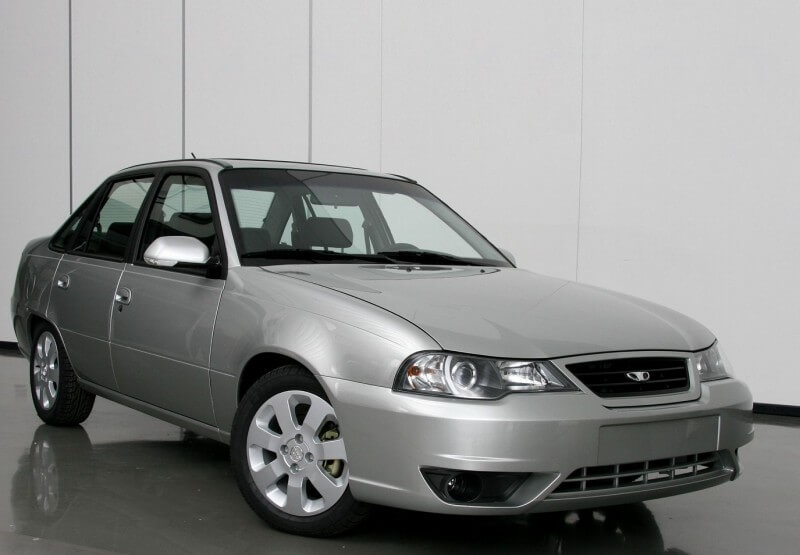
The diffuser located in the front bumper and the niche under the fog lights was enlarged considerably. At the stern, the lanterns were reduced to a shape that resembled the stylistic appearance of the flags.
Exterior
Most often you can see the car in the back of a sedan, but sometimes you can see both 5 and 3-door hatchback. Production of such cars with such a body was not as massive as a sedan, and stopped in 2003. There is not much to say about the external characteristics of the Daewoo Nexia, because there is a feeling that the sedan is stuck in the 1990s.
As well as everywhere, here there is also a reverse side of a medal, after all simple forms have allowed to lower cardinally cost of release that is really actual for the budgetary car. Some details in appearance should be singled out – quite attractive optics and quite modern hood. During the whole period of production there were produced 2 main complete sets: GL and GLE.
GL was considered to be a budget model and was equipped with unpainted bumpers and rear view mirrors. The second set already had painted bumpers and built-in fog lights. It is worth emphasizing that the glass of fog lamps often crack. This is partly due to the fact that the additional headlamps are heated, and when water gets on them, the lens cracks.
Not such a powerful set of shoes were worn in 13-inch wheels, and more powerful modifications were made with wheels with a diameter of 14 inches. It would seem that the difference is only one inch, but thanks to even wider tires, the control was improved. If you get a Daewoo Nexia with 14-inch wheels and the name DONC, it means that the car is not older than 2002.
After all, just in 2002, it underwent another external update and began to be equipped with a new powertrain. Since the same year, the sedan had chrome-plated radiator grilles, with a more complex shape.
Interior
It is clear that the interior of Daewoo Nexia will not be able to meet the option of night vision, or a seat with massage, but the interior of this brand is considered a virtue, because it has the greatest space among opponents. The seats, installed in front, have a medium degree of lateral support, heating and electric drive for adjustment in six directions. The lounge has free space for five adult passengers.
If we talk about landing, it is quite underestimated, which distinguishes Nexia from other budget cars. It is interesting that in GLE modification the driver’s seat cushion is adjusted in height.
Standard equipment of GL differs greatly from each other in modifications, but it is possible to see GL with support of the conditioner, power steering. All GLE versions come with four power windows, a tachometer and an electric antenna.
The backs of the rear sofa do not have a folding function, which is a disadvantage when transporting bulky items. The instrument panel after restyling has received a transformed look, a fashionable visor under which there are 3 large sensors.
The central console is slightly turned towards the driver. The console has various control buttons and navigation system, which will now be available to customers even in the standard equipment. All the plastic has improved in quality, all unloved gaps and gaps have disappeared, and the noise insulation in the cabin has been improved.
The steering wheel has a new rim with a special notch in the fingertips. It will not leave indifferent and calm illumination of devices. For extra money you can install a sliding hatch on top. In the second generation of the famous sedan began to use more expensive plastic, and the quality of fixing elements and parts has improved significantly.
The front panel has oval and rectangular details. All the elements are conveniently located, have been illuminated. Some control elements, more precisely the buttons of the electric package, are installed on the driver’s door.
The Daewoo Nexia luggage compartment has a new capacity of 530 litres. This is a very good result for today.
Specifications
Powertrain
Daewoo Nexia’s list of powertrains is not as long as her rivals’. It contains only a pair of gasoline engines that are designed for four cylinders and meet Euro-3 environmental standards. The weakest in the range of engines is represented by A15SMS, to which everyone is accustomed in Chevrolet Lanos. The device has a working volume of 1.5 liters and develops 80 horsepower at 5600 rpm.
The power unit received a distributed fuel injection system. There is also an electronic control unit, which allows to fill various modifications of fuel (from AI-80 to AI-95). The gas distribution mechanism was designed according to SOHC type, which means a pair of valves per cylinder, which are controlled by a camshaft mounted at the top.
Such characteristics allow the car to accelerate up to 175 km/h, and the first hundred it covers in 12.5 seconds. It is difficult to call the engine economical, because it eats about 8.5 liters in the city cycle, 7.7 liters on the highway, and requires 8.1 liters of fuel per 100 km in a mixed cycle.
Next comes a more powerful engine, which was taken from Chevrolet Lachetti. Its capacity is 109 “horses”, taking into account its volume – 1.6 liters. Chevrolet Cobalt has a similar engine. The power pack is equipped with a DOHC gas distribution system with a pair of camshafts at the top and 4 valves per cylinder.
The power of such a motor makes it possible to accelerate up to a mark of 185 km/h. The first hundred is achieved by a passenger car in 11 seconds.
It is logical to conclude that the increase in power will also increase fuel consumption – 9.3 liters in urban mode, 8.5 on the roads and 8.9 in a mixed cycle. Both engines have a front, transverse layout, and also have in-line cylinders.
Transmission
Synchronized operation of power units with 5-speed manual transmission and one clutch disc, which, as seen in practice, has a “heavy” switching device. If the timing belt breaks, the engine will need to be searched, although it is not guaranteed that the valves will meet the pistons.
Suspension
The front suspension is an independent, spring loaded suspension made on a McPherson-type platform. On the rear, semi-independent structures with springs and torsion beam are used. The suspension behaves quite well on Russian roads. The old design, cheap equipment and low settings remind about themselves at each functioning of the car.
Based on the results of the test drive, it should be concluded that Nexia behaves even better on the road than the “classic Lada”, but in many ways loses Kalina, Priora and Grant. Most likely, these drawbacks made the engineering staff think about production of the 3rd generation Daewoo Nexia.
Brake system
The brake equipment is as follows: disc brakes are installed at the front and drum brakes at the rear.
Steering system
Rack and pinion steering. But the hydraulic power steering is not included in the basic equipment, but the engineers have foreseen the free space for its installation.
Dimensions
The length of the machine reaches 4482 mm, width – 1662 mm, and height – 1393 mm. The wheelbase is 2520 mm, and the ground clearance is set at 158 mm, which is not so much considering the quality of our roads. The turning radius is 4.9 meters.
The whole car weighs 1025 kg, and the maximum weight is 1530 kg. One of the advantages of Daewoo Nexia is a spacious luggage compartment – 530 liters of free space. However, the opening has been made a little narrow, which complicates the loading of any things.
New motors in 2008
With the advent of 2008, in addition to body changes in appearance, Nexia updated the list of engines. Instead of the morally outdated G15MF engine, they began to install an internal combustion unit A15SMS. ICE has a fuel system from Chevrolet Lanos, so the engine meets Euro-3 environmental standards. But the 16-valve A15MF was replaced by a fresh 1.6-liter F16D3.
The first engine from Chevrolet Lanos is stronger than its predecessor – now its power is 90 horsepower. However, the engine has got a big drawback – because of the fact that the new model’s HBC is installed by Lanos, during the breakage of the valve timing belt the valve “hits” the piston.
The gasoline 1.6-liter 109 hp engine has one interesting point. To reduce the emission of toxic gases it is equipped with an EGR valve. However, from “our” gasoline recirculation system is often clogged, so the majority of car owners of this valve muffled.
However, the power plant has adopted some of the disadvantages of the German engine. Often the lambda probe leaves its working position, oil flows from under the valve cover and there are difficulties with the operation of the thermostat, which opens earlier than necessary. The fact that the oil is flowing isn’t the whole problem. Oil often flows into the candle wells, after which the internal combustion engine starts to triple.
But on the powertrain there is occasionally oil between the piston rings, so, in this respect, the F16D3 is reliable. Exactly like all the machines, an Uzbek-made sedan requires maintenance, and the engine should be changed oil in the period of time, as specified in the established regulations.
As in other vehicles, the oil should be changed after every 10,000 kilometres. If the conditions of use of the vehicle are difficult (heavy loads, functioning in a hot region), the oil should be changed after 5,000 km.
There are no specific recommendations for Nexia engine oils. To prevent the oil from burning and black on the elements inside the power plant, it is good if it is of high quality and has good additives. It is better to refuse from mineral oil, it is advised to use “synthetics” or “semi-synthetics”.
During the start of the engine on thick oil there is a characteristic wear of parts of the engine, reduced engine life, so it is better not to use the “all-season” in the winter. It is advisable to buy almost any oil from popular world manufacturers, and not a fake. It can be Castrol, Mobil, Chevron, ELF and so on.
Many drivers already know that just because of fake oil there is soot and reduction of the power unit life. Counterfeiters do not have quality additives that have the necessary lubricating properties, reduce friction of parts.
Safety
Daewoo Nexia used to pass crash tests on a frontal collision at a speed of 50 kilometers per hour. Then everyone was scared of the driver’s door jammed in the opening, the welds, which simply separated in the floor area, and the metal of the middle stand, which bent from the jerk of the seatbelt.
Later on, the sedan had to pass another crash test, which was more difficult. This was a blow with a deformed barrier at 64 km/h with a smaller overlap area. Based on modern rules, the offset collision occurs in such a way that the machine hits the obstacle not 50, but 40% of the front part.
Initially, this seems to be a minor change, but it increases the global load on the driver’s side member. So, Nexia has been accelerated to a certain speed and crashed into an obstacle. It feels as if an invisible object had grabbed the car by the nose and turned sideways, squeezing the driver’s doorway.
The left-hand windscreen post stood almost vertically, the roof lined up “in the house”. The body sill broke down and a large zigzag went to the left. The inner panel of the door was folded inside the wrinkled opening at an acute angle. If we talk about the outer panel, it moved away from its base so that it became visible crippled insides in the form of locks protruding in different directions, bent guide mechanisms of the window lift.
In the middle, between a pair of door panels torn off from each other, a security bar was sticking out lonely. The latter is a powerful pipe integrated inside the door to help it “hold” side and front impacts. Similar bars, which served as pipes, were installed in the front doors of VAZ-2110, as well as Svyatogora.
They helped these vehicles keep the door aperture away from the consequences of terrible collisions. However, on our sedan, the bar was torn off from the side of the door in the spot welding areas and could not change the result of the collision in any way.
It was as if the Uzbek-made vehicle had decided to catch up with and outperform the worst results of all the vehicles that had been tested so far. The windscreen post was shifted 370 millimeters longitudinally (Eyeball has a value of 365 millimeters!).
The end of the steering shaft has been moved back by 290 millimeters (the same Eye has a value of 295 mm!). The clutch pedal was dented 4.10 centimetres inside the vehicle. The space under the panel was reduced by 3 times, and the left foot of the driver (dummy) was caught by the seat cushion and wheel niches. The right foot was stuck at the floor between the accelerator and brake pedal.
Speaking about the driver himself, during the impact he applied himself to the steering wheel, bent his rim, hit his head on the corner of the dashboard visor. The collision was so severe that the probable indicator of HIC brain damage bypassed the boundary of the dangerous “red” area by 1,000 values.
The blow itself, with the steering column moving towards the driver, placed a heavy load on the sensors in the neck of the dummy. Therefore, a broken rib in such a collision is a real danger. On top of that, Nexia also guarantees a fracture of the left femur, as the load on the left femur has reached a ton during the collision!
The left knee hits the area of the panel where the junction box, fuses and relays are located. The knee of the right leg rests on the soft papier-mache of the panel in an area where there are no hard objects. However, since the foot of the right leg was “locked” under the pedals, the shin felt a strong bending force. When the blow is stronger, the shin bone will simply break.
Of course, the passenger didn’t get it that bad, but it did. He hit his head on the soft overlay on the panel, which is not so dangerous, based on the coefficients of HIC of 608 units. However, the neck sprain during the nod was significant.
The left femur of the dummy experienced loads that went beyond the green area. After the impact, the passenger began to kneel against the glove box lid. Therefore, the result of the test can be called sensational – only 1 point out of 16 possible during the frontal collision.
It turns out that the sedan provides its customers with the same level of protection as the small Oka. Even VAZ-2110 is much better than Daewoo Nexia. When viewing the body of the sedan had to watch a terrible picture. The panels broke away from each other, the metal in a chaotic order crumpled.
The unusual degree of deformation was very striking – the shield of the nose was curled sideways, but was not curved. It was almost intact. However, all the elements behind it – floor panels, thresholds, body racks – were wrinkled as if they were made of cardboard.
If you take the edge of the floor panel, which is detached from the floor, you feel that the metal “breathes” like bent organic glass. It feels like the bodywork floor has been stamped out of too soft metal. Probably substandard. Therefore, during the impact the bottom went “wave” – it almost did not resist deformation.
The result of Nexia is the presence of weak seams, weak metal and the bottom itself. After Daewoo Nexia of the first generation was turned over, other no less surprising moments were exposed. The bottom of the gasoline tank sparkled with naked metal, which was forgotten to paint. The rust covered the flanges of the exhaust pipes.
Краш тест
Complete sets and prices
The year 2015 gave Daewoo the opportunity to sell a passenger car in 13 configurations. However, in fact, they can be divided into 3 generalized ones – “Classic”. (GL), “Norma” and “Lux” (GLE). The “Classic” version means that the car is poorly equipped, even without an audio recorder, and offers only a single 1.5-litre power pack.
The basic equipment includes inertial seat belts, 13-inch wheel rims, adjustable head restraints on the front seats, heated rear window, a watch, a rear shelf mounted on the dashboard, and an electric headlight corrector. This model is estimated from 7119 $.
The “Norm” modification provides everything you need. It includes: air conditioning, and/or GDS, a four-speaker car stereo, 13 or 14-inch wheel rims. In addition, the best upholstery of the interior.
It is possible to choose the power unit you need personally: 1.5-liter or 1.6-liter. It costs Nexia “Norma” with the engine volume of 1,5 liters – 7941 $, and with the engine of 1,6 – 8305 $.
Modification “Lux”, except for all listed, possesses the central lock, GUR, the conditioner (in an optional order), electric windows, wheel covers, foggers, repeaters of turns on mirrors on each side, 14-inch disks of wheels, a sun-protective strip on a windshield and colouring of a bumper under colour of a body. Version “Lux” with the engine of 1,5 liters is estimated at 8906 $, and with the engine of 1,6 liters – from 9001 $.
Reviews by car owners
In general, many drivers speak positively of the Uzbek sedan. The car is quite popular in the Russian Federation, Ukraine and so on. There are no special breakdowns, everything, like the rest of the cars – replacement of consumables, battery, belt of gas distribution mechanism, suspension elements.
The car moves confidently on dry asphalt and on a snowy road. The parts are not as expensive as on the model of foreign production. Most recommend this model for beginner drivers.
They note among the weak points – electronics, suspension. In winter, in severe frosty weather, the stove is not always able to cope, and therefore the interior can be cool. Some people take the model only for its sturdy running gear, which went to the sedan from Opel Cadett. Others decided to use the tuned version of the car.
The pros and cons
Pluses cars
- A good suspension that does a good job on our roads;
- Improved noise insulation;
- Quite attractive appearance of the car;
- Sufficient ground clearance;
- Reasonable prices at maintenance service;
- Not bad heating system with 4 modes of operation;
- Large luggage compartment;
- Spacious interior;
- Price Daewoo Nexia;
- A lot of free space inside the sedan;
- Improved equipment in the second generation of Nexia;
- New motors installed after 2008;
- Various adjustments to the driver’s seat;
- There is an electric headlight corrector;
- The car keeps the road at high speed not bad;
- Good visibility.
Cons of a car
- Weak security equipment;
- Absence of airbags and ABS;
- Weakness of tactical equipment;
- Medium quality vehicle assembly;
- Insufficient lighting from the headlights and inability to adjust them;
- Weak braking system;
- “Cotton” steering wheel control;
- Insufficient dynamic parameters of both power units;
- Considerable fuel consumption (9 liters/100 km), especially during running-in (about 12
- liters/100 km);
- Impossibility to fold the rear sofa when transporting oversized cargo;
- Outdated appearance;
- Morally tired central console (after 2008 it was slightly improved);
- “Wipers” often fail;
- Every three years the generator and starter need to be repaired;
- A small opening in the luggage compartment.
Summing up
What would you say? Well, first of all, it’s a fairly reliable, inexpensive car. Cheap service. With a sharp, traction engine. Do not forget about a comfortable and large trunk. Well, among the drawbacks there is a weak body and some inconvenience in the cabin (legs have nowhere to go), as well as poor noise isolation.
In conclusion, I would like to say that Daewoo Nexia is a simple, practical and cheap car, but according to many experts, slightly outdated. But who knows, maybe the upgrades and upgrades planned by the manufacturer for the future, will force motorists to change their opinion. Of course, the second generation of sedan has become much better.
This applies not only to the appearance, but also to the interior decoration and equipment. Inside the car is spacious, there is a large luggage compartment, where you can put all the necessary things. The power units installed after 2008 have become sharper and more innovative.
The equipment has become richer. However, many people prefer to buy a supported but foreign car. This can be understood, because there is a much better level of safety, the equipment is brighter, and the dynamic performance is clearly superior to Deu Nexia. However, the repair will cost much more.
We advise you to read the article: Story of Daewoo Motors


